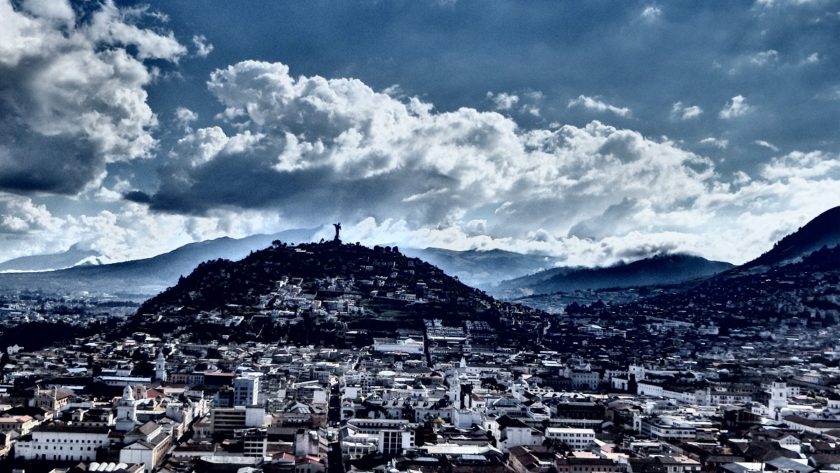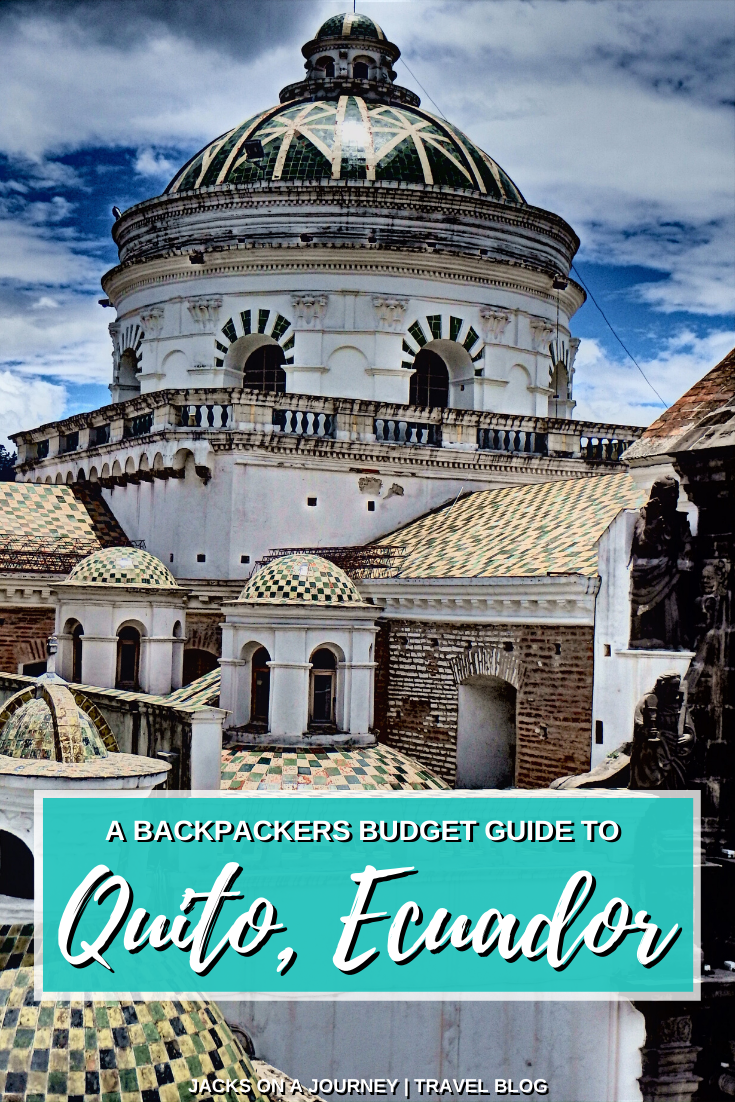Ecuador’s capital city is a popular destination for backpackers on the South American trail. There is plenty to see and do here, with the added bonus that it is cheap.
As well as being a great destination in itself, Quito also serves as a great hub for accessing many other places in Ecuador. Visiting Otovalo market and hiking Cotopaxi are great examples for day trips.
We actually passed through Quito three times during our short stay in Ecuador! Six days here was much more than we would recommend for others travelling, but we did need a break after our non-stop trip around the Galapagos.
Three days or so should be perfect for the majority of travellers, using our budget guide to Quito, Ecuador.
What to do in Quito
Free walking tour of the sights
A great way to get acquainted with Quito’s Centro Historico! Free walking tours should be top of the list for any budget travellers visiting a city. We went with Free Walking Tour Ecuador due to their great reviews and nearby meeting point.
Mercado Central
First up was a trip to the Mercado Central – the main food and produce hub found in almost every town in South America. Endless stalls of fruit and veg, and even herbal remedies promising cures for everything from illnesses to bad luck.
We were also staggered to discover there are over 3,000 varieties of potatoes available in Ecuador! That might explain the huge section of the market dedicated to them.
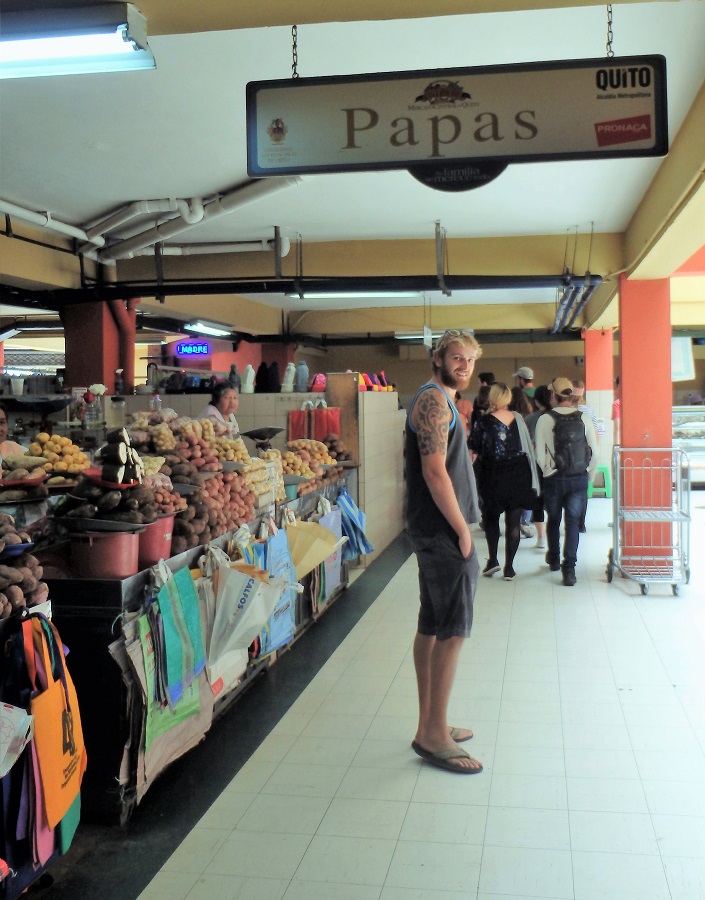
Next was the Plaza de la Independencia, Plaza del Teatro and Plaza de San Francisco, to name just a few. It is easy to see why the centro historico is often described as ‘a city within a city’.
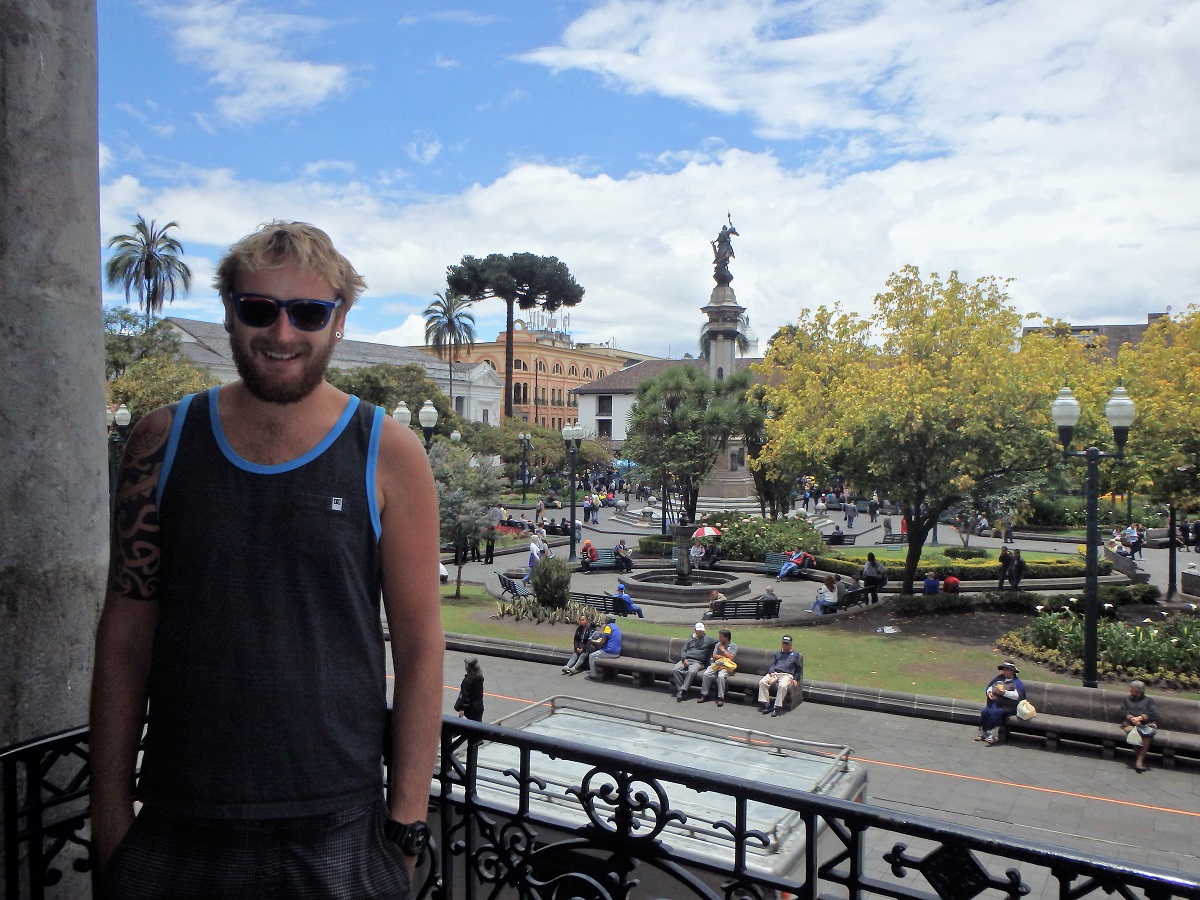
Quito has no shortage of beautiful buildings. The majority seeming to be either churches or museums, and there are a lot of churches here. We were told that 80% of Ecuadorians are Catholic which is why it is very important to their culture.
Conversely, our guide shared his liberal views with us and stated that he in fact, was not religious.
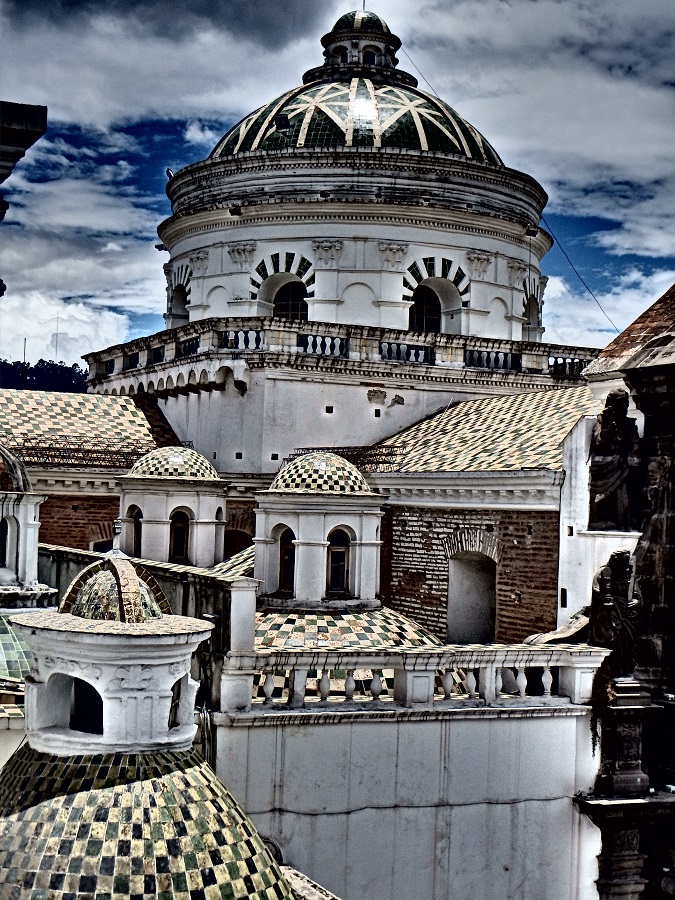
Museo de la Ciudad
To highlight the importance of religion to the people of Ecuador he took us to the Museo de la Ciudad (Museum of the City) which contains a modern art gallery, where they showcase contemporary artists.
The newest display on show was said to be an anti-domestic violence exhibit. The problem however was that it included some particularly controversial pieces which depicted sexually explicit images, clearly linked with Catholicism. We were told it was to highlight the issue of abuse in churches being overlooked.
Obviously, it did not go down well with the locals… The exhibit was immediately closed due to protests and locals going as far as to aggressivly vandalise the museum.
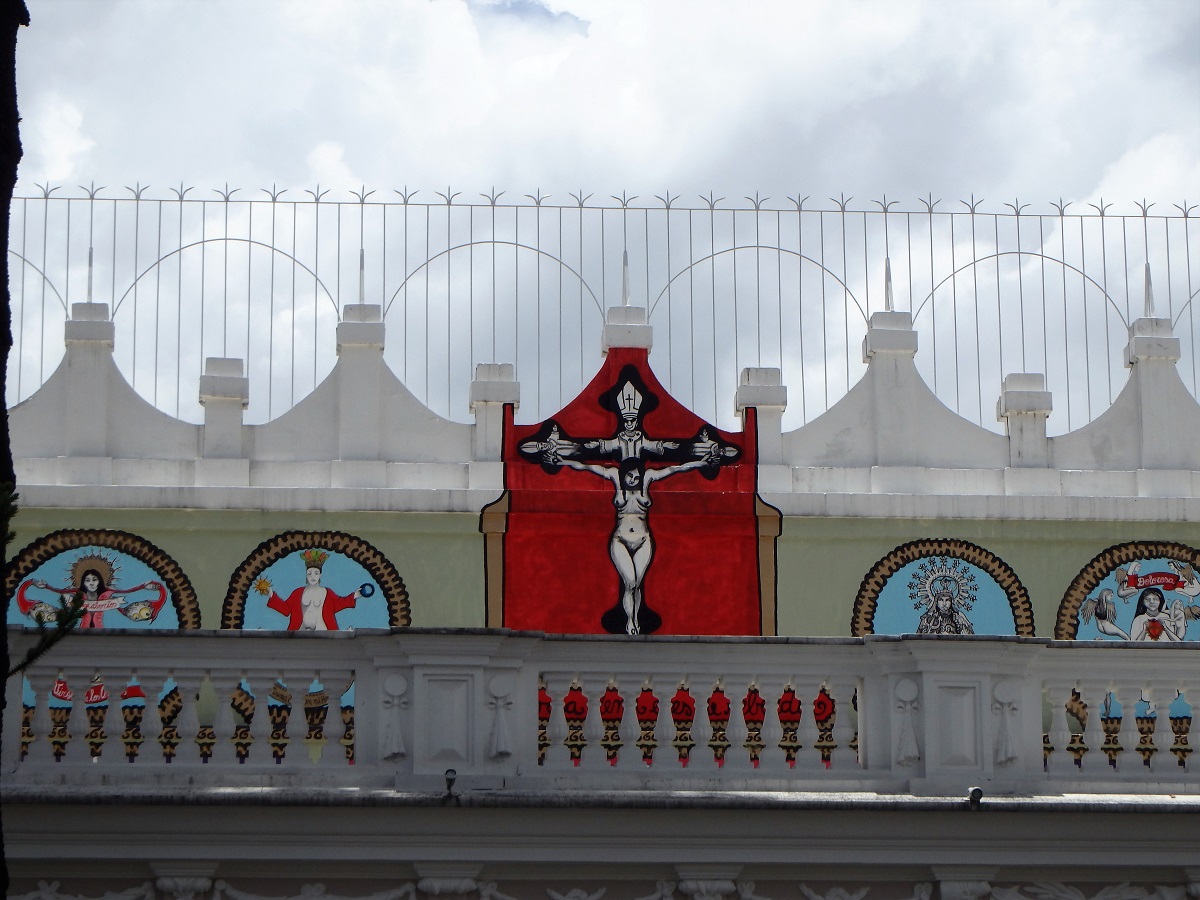
We received an insightful history lesson dating back to the 16th century invasion of the Incas. Also about the country’s dire economical circumstance since the crash of their former currency (the sucre) and their subsequent dollarisation in 2000.
The politics and corruption scandals surrounding Ecuador’s history and finances were an interesting, yet mind-boggling inclusion. Our guide did be sure to make clear the difference between what were facts and what were his political opinions, which is always admirable.
Virgin Mary statue
We ended our tour at the bottom of El Panecillo hill, gazing up at the 45m tall, winged Virgin Mary statue.
In Quito’s north they joke that she gazes across the beautiful part of the city, showing her back to the industrial south which is too ugly to look at. Nothing like some friendly banter…
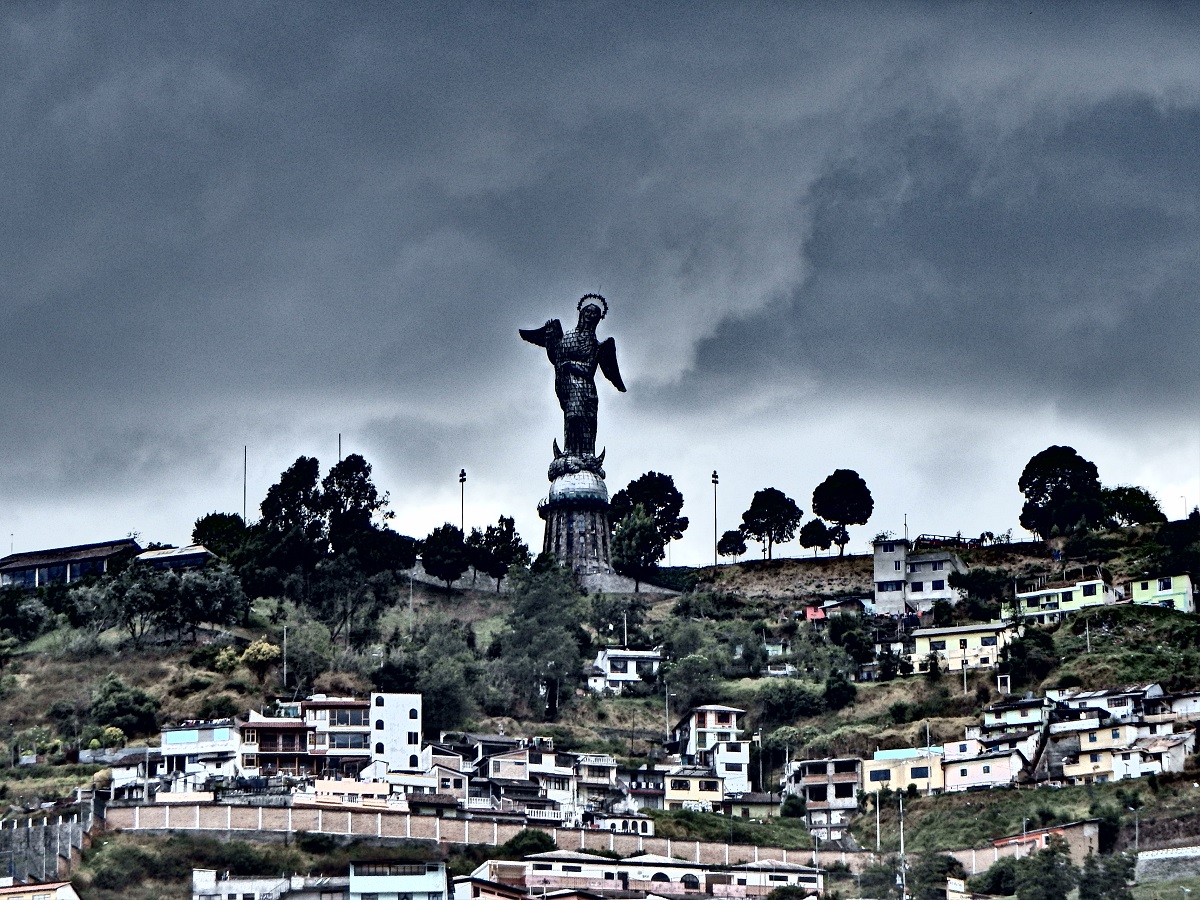
Ciudad Mitad del Mundo
Without a doubt one of Quito’s biggest attractions is the equator line. I knew I wanted to be in both the north and south hemispheres at once!
We strangely discovered on arrival that there are in fact two equator lines. The ‘original’ line (which has the park and monument) and then the new, more accurate, ‘official’ line just 250m away.
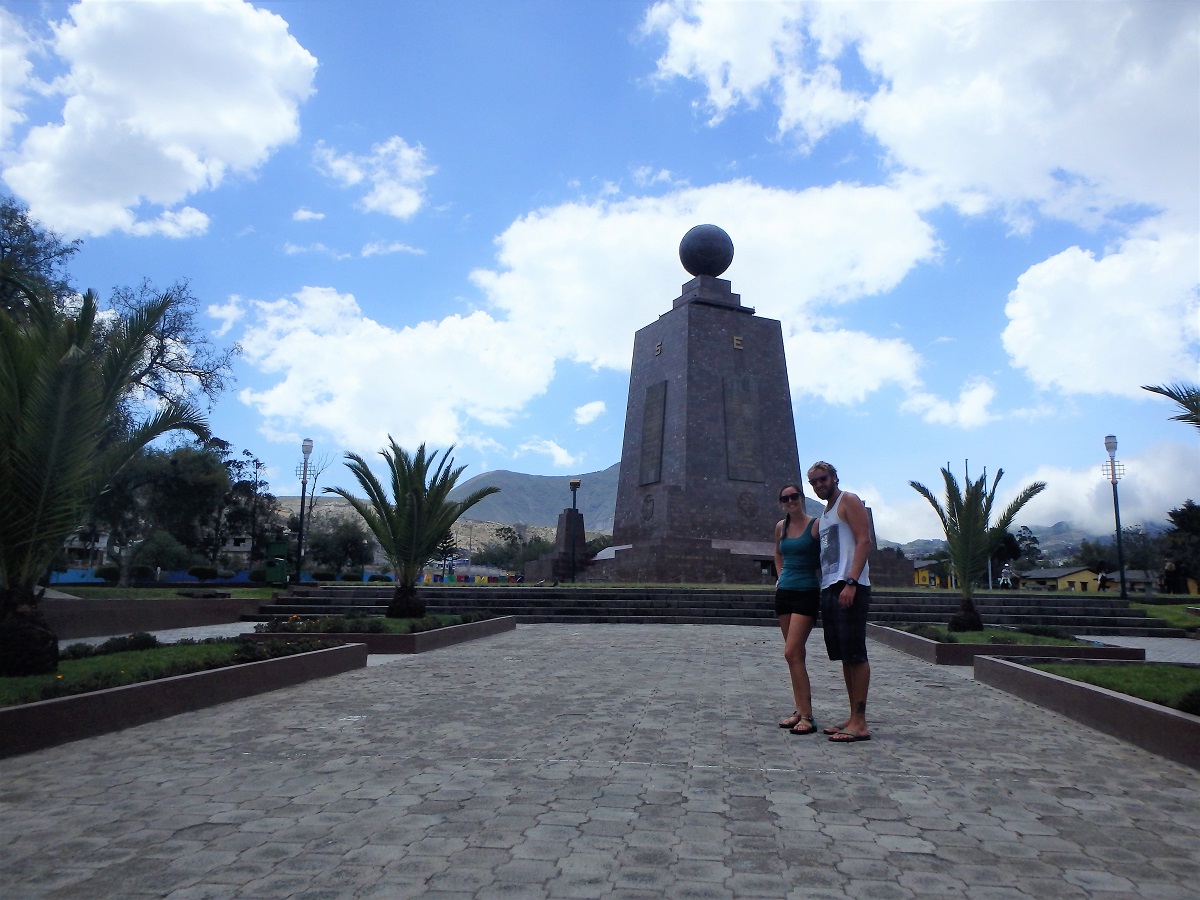
The park encompassing the original line was definitely designed with tourists in mind. It contains restaurants, souvenir shops and just has that general amusement-park-feel to it.
There is even a viewing platform at the top of the monument which you can pay an extra $5 USD to climb. Not cheap by South American standards! As budget backpackers, we declined having already paid $5 to enter the park. Plus the view is already pretty great.
Note: Not thinking, we visited the park at midday when it was over 100F/37C! Maybe consider earlier morning when it’s cooler.
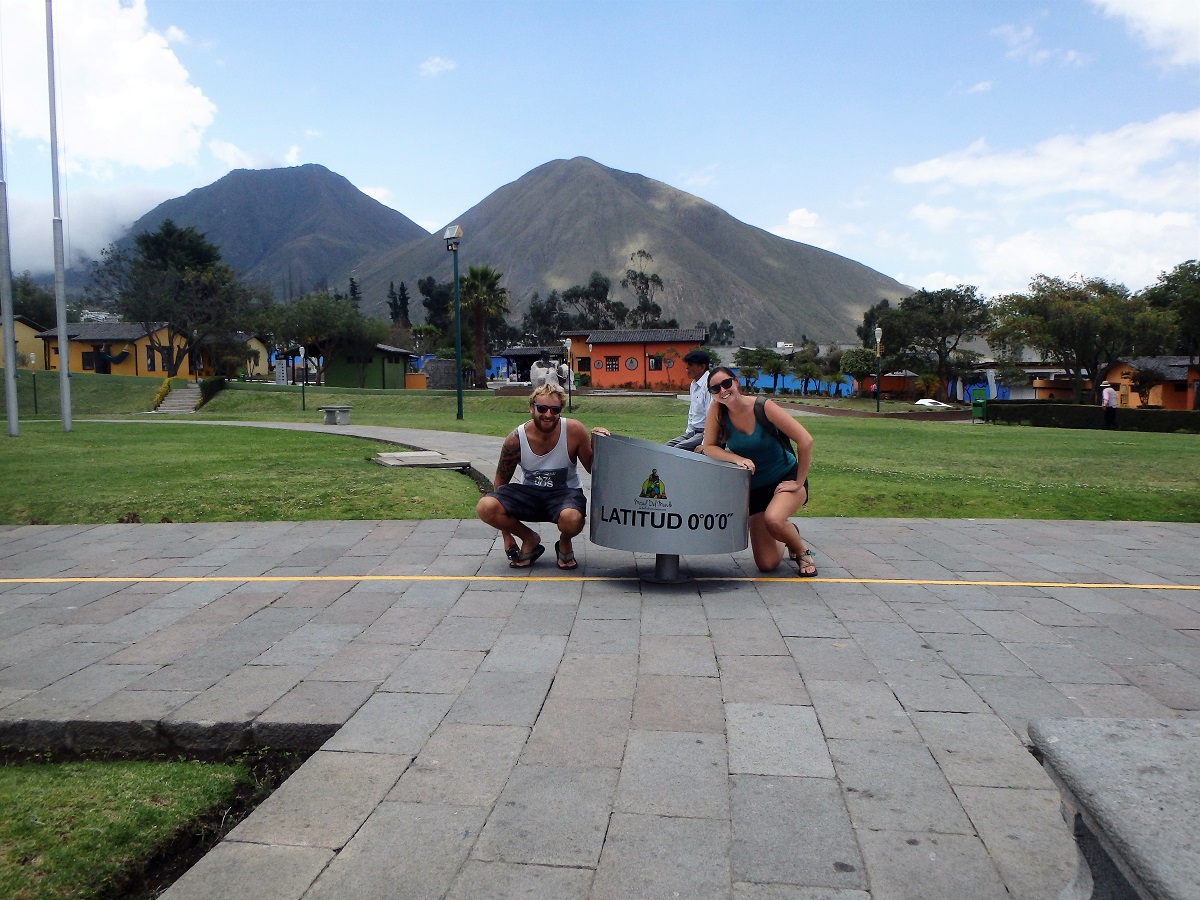
For no extra charge, there is a fun area on site where they have interactive experiments that supposedly show how the earths magnetic field differs here. There are even more surrounding the new ‘official’ line. We have heard rumours of these ‘ games’ being a bit of a trick, but its just a bit of fun.
A note on how to get there: Using Quito’s public transport is pretty straight forward (if we can do it, anyone can), and highly recommended for other budgeting backpackers.
We caught the blue metro bus north to Ophelia. At the small terminal we changed to a bus now labelled ‘Mitad del Mundo’. Be sure to reiterate to the driver where you are going as he had to tell us where to disembark (it wasn’t the end of the line).
Hike Cotopaxi
Ecuador’s tallest active volcano (and second highest summit overall) is a must for avid hikers and mountaineering enthusiasts, who aren’t afraid of a little altitude.
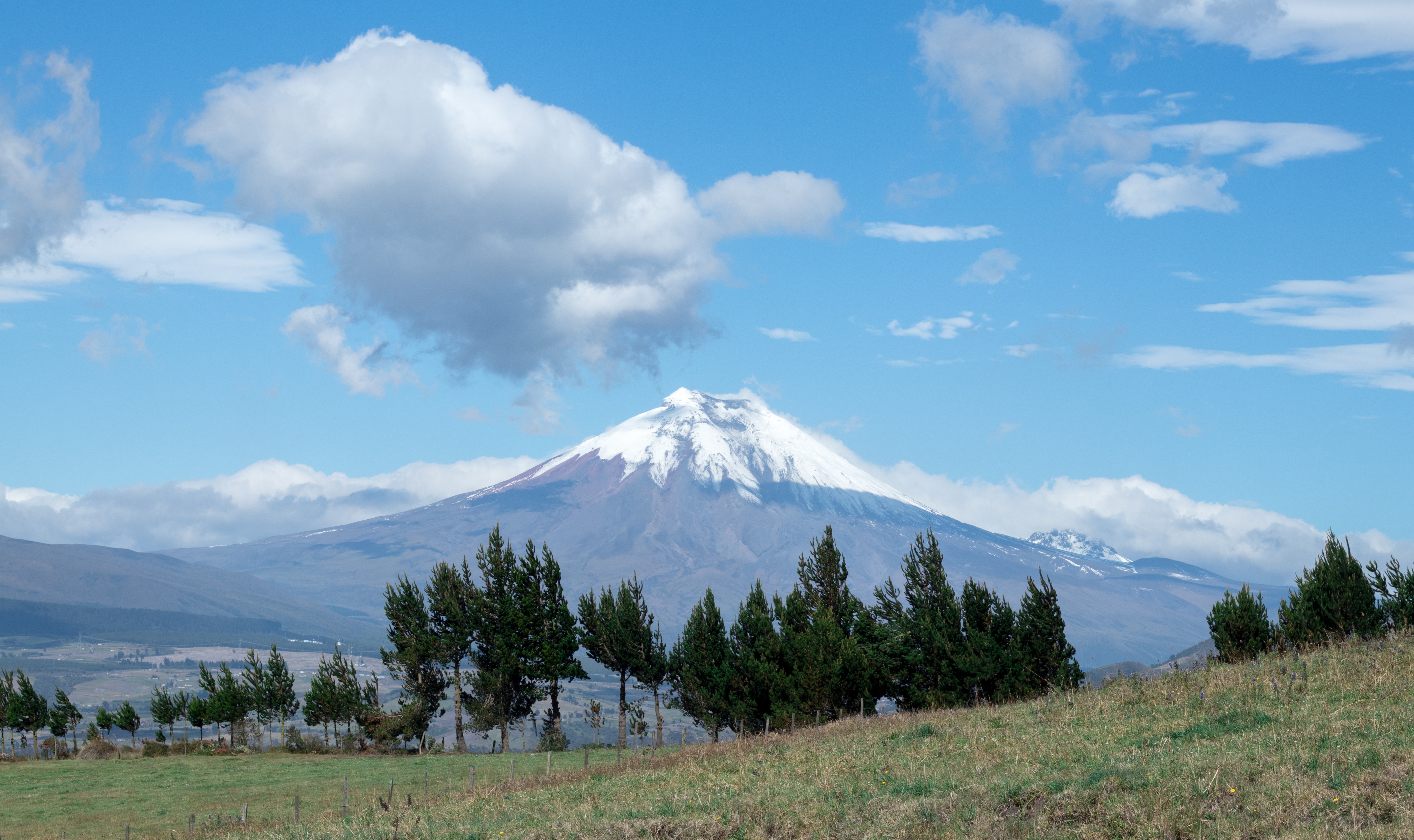
Cotopaxi is easily accessible via day trips from Quito, or you could even make your own way there. The hike begins from the car park, 4,600m high with a 200m climb to reach the Jose Rivas Refuge. With a guide you can also hike the 200m further to the glacier.
Unless you are well accustomed to high altitudes, we would suggest going with a guide or operator. Altitude sickness is a thing, don’t underestimate it.
If a day trip isn’t enough, travellers can join longer 3-day trips to the National Park to try and summit Cotopaxi’s peak!
Climb the Basilica del Voto Nacional
Quito’s strikingly beautiful Basilica del Voto Nacional is definitely worth a visit. Even budget backpackers like us can afford the $2 fee which permits entry to the church and the tower.
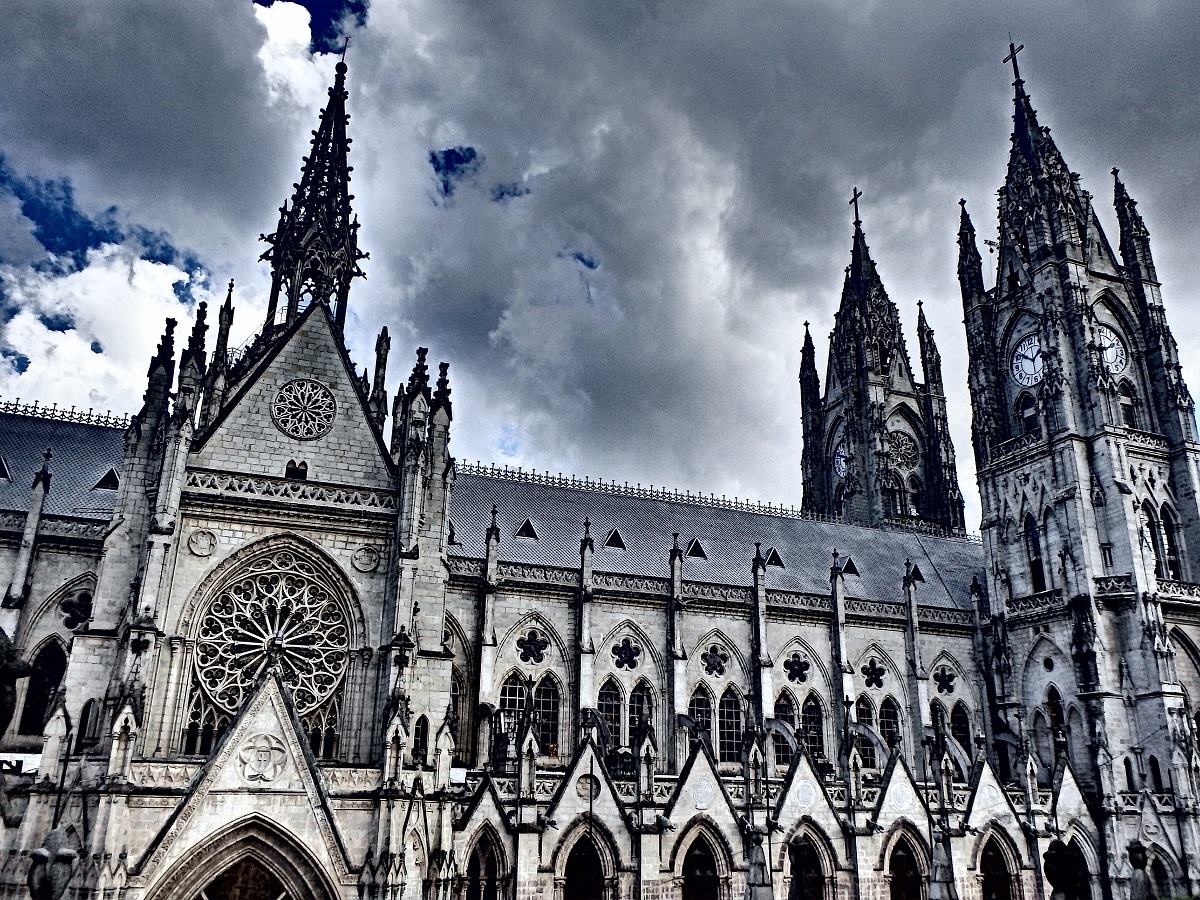
As expected, the inside of the basilica is very grand.
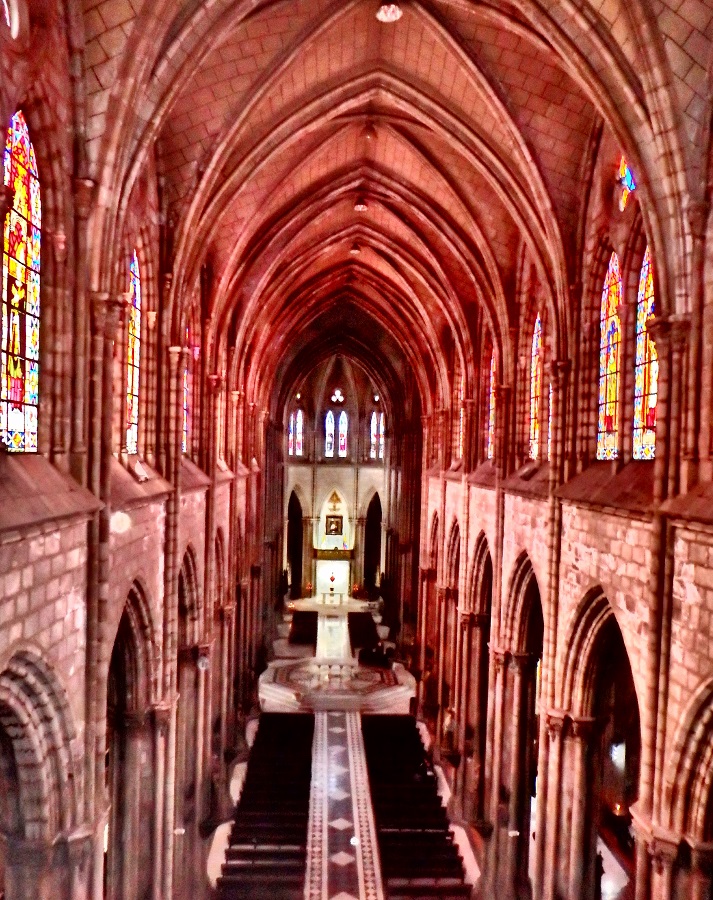
From here we followed an internal staircase which would up to the base of one of the towers. The final ascent was via a rickety spiral staircase, leading to the highest viewing platform.
I won’t lie, I don’t like heights and get pretty bad anxiety in such circumstances… it took me a while but I did finally make it to the top after some coaxing from Rhys. The views were totally worth it however I did not stay up there long, ha!
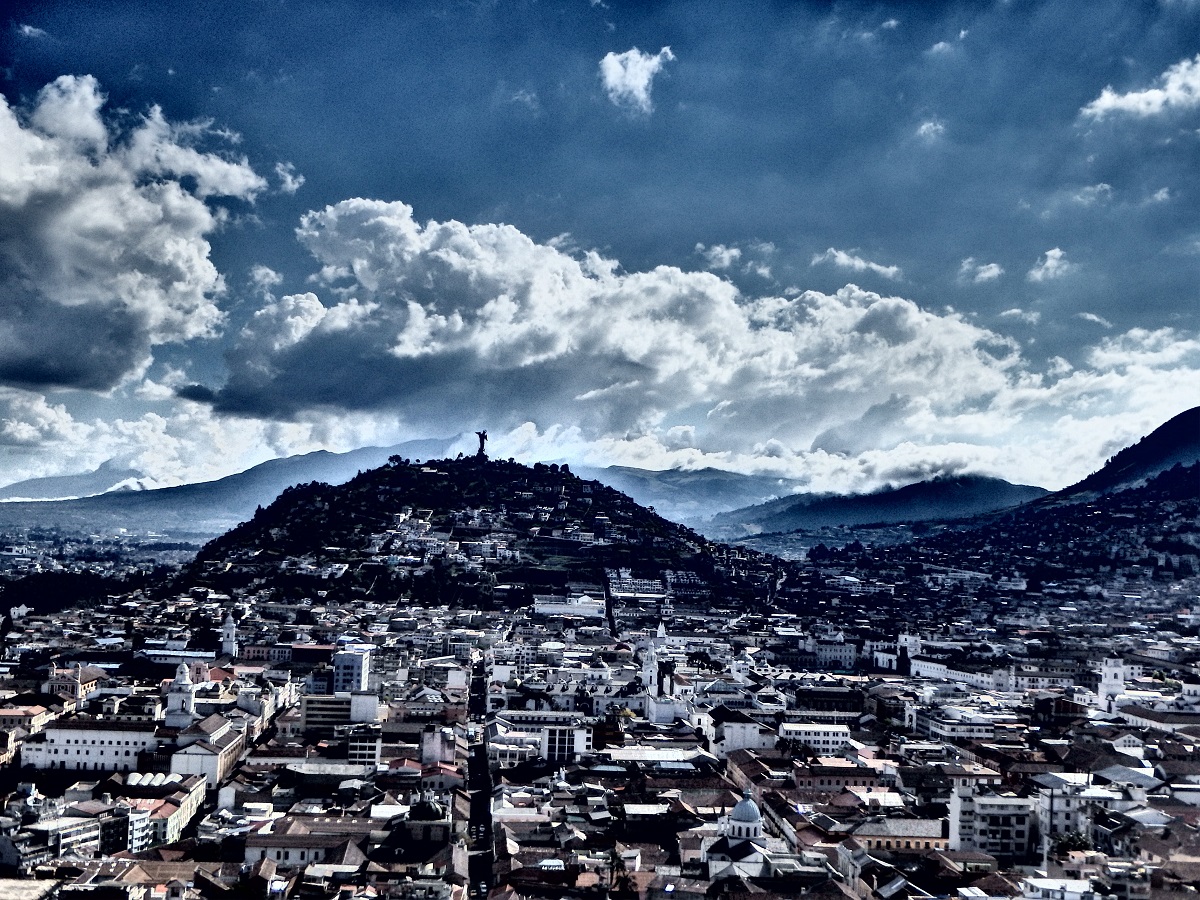
The basilica is just a 10 minute walk from the centro historico and so a good budget-friendly activity for an afternoon!
Party in La Mariscal
La Mariscal, also known as Quito’s ‘party district’, is the city’s Zona Rosa region where the majority of it’s restaurants, bars and clubs can be found. Basically, the go-to party spot for backpackers.
There is no shortage of options here. Clubs appeared to play everything from reggaetón to techno to jazz.
A night out here is definitely fun, but backpackers be warned as it’s a great way to exhaust your budget. Check for any promotional discounts with your hostel which may offer free entry or money off drinks in a bar on a certain night.
We had a night out organised by our hostel which meant free entry and a free fishbowl to share. It is also a great way to mingle with others from your hostel.
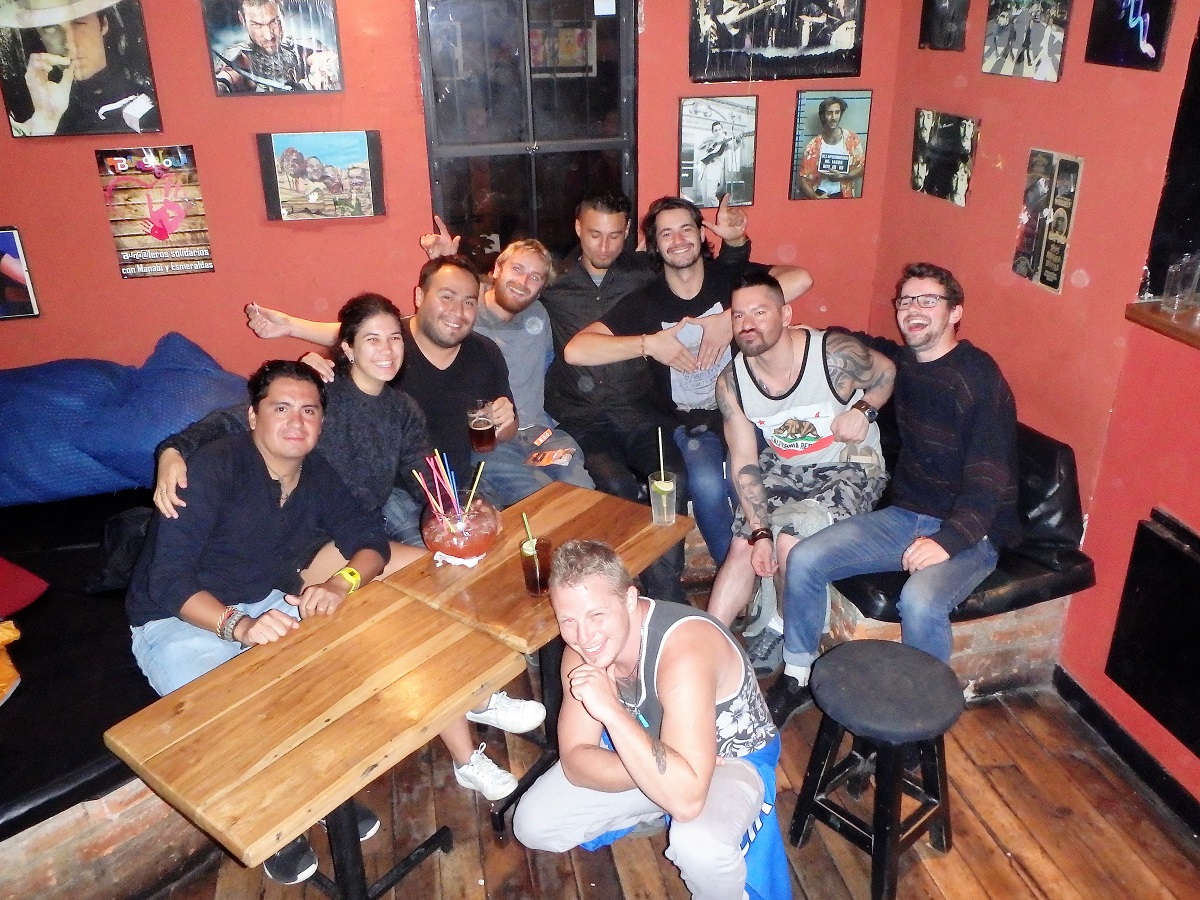
What to eat in Quito
No backpackers guide to Quito, Ecuador would be complete without mentioning both the good (and not so good) local cuisine.
Fruit
What initially grabbed our attention in Quito, was fruit. There is just so much of it and such a variety! Some fruits were familiar but many were not. We were shown lulo, jocote, granadilla and guayabe, to name a few.
One we actually got to try was pitaya amarilla, or yellow dragon fruit. This deliciously sweet fruit was something of revelation! However we were advised that eating too much can result in an over-active digestive system, if you catch my drift…
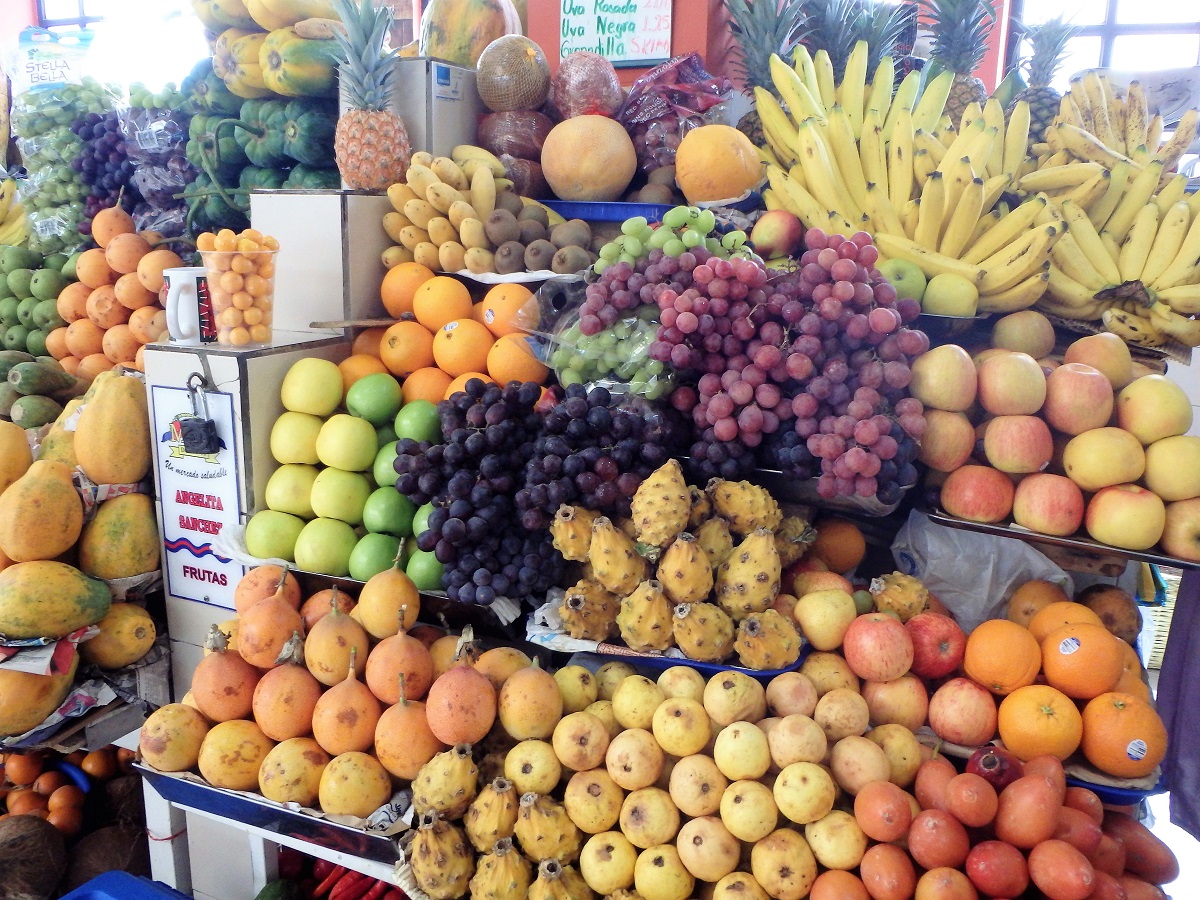
The most fun option is usually to buy and try whatever catches your eye. But many fruits here are actually quite sour and not eaten ‘as-is’. Instead they are consumed in smoothie form with added sweeteners such as milk and honey. One particular smoothie with avocados a favourite with locals as it is thought to be an aphrodisiac!
Lunch
For something more substantial, look no further than a cheap almuerzo (lunch).
The country’s national dish is a mouth-watering hog roast known simply as hornados. Tender pork served with crispy crackling and tortillas de papas for just $3.50 USD in the Mercado Central. Seriously good!
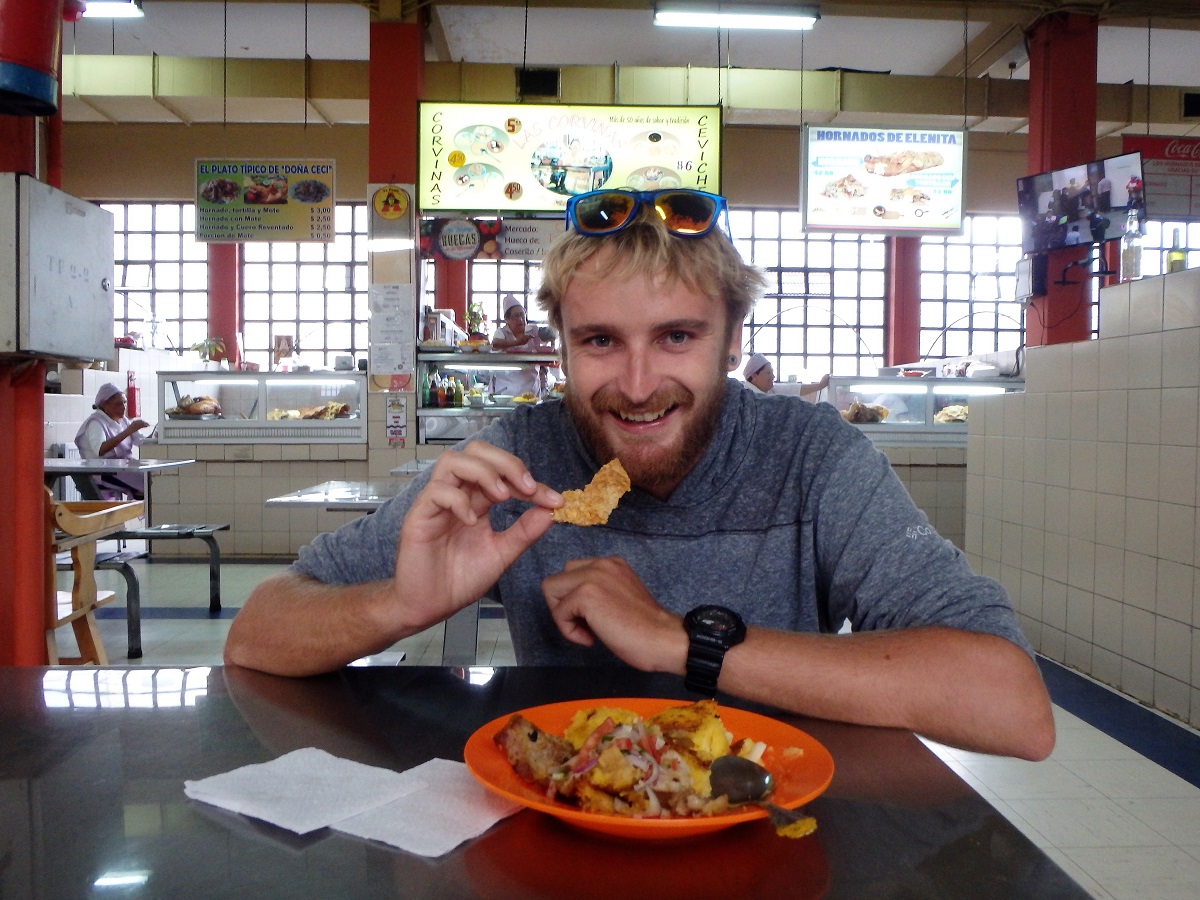
Cuy
Another specialty this side of the world is cuy. Known more commonly as guinea pigs to us.
Cuy is traditionally eaten on special occasions, which might explain its higher price tag. Not as budget-friendly as we backpackers would like, a whole cuy costs around $20!
They can however be bought in halves or quarters for those willing to try it. Apparently it tastes like chicken! Having had several guinea pigs as pets, Rhys felt to bad to try it. I in turn felt too guilty and slightly regret not trying it alone.
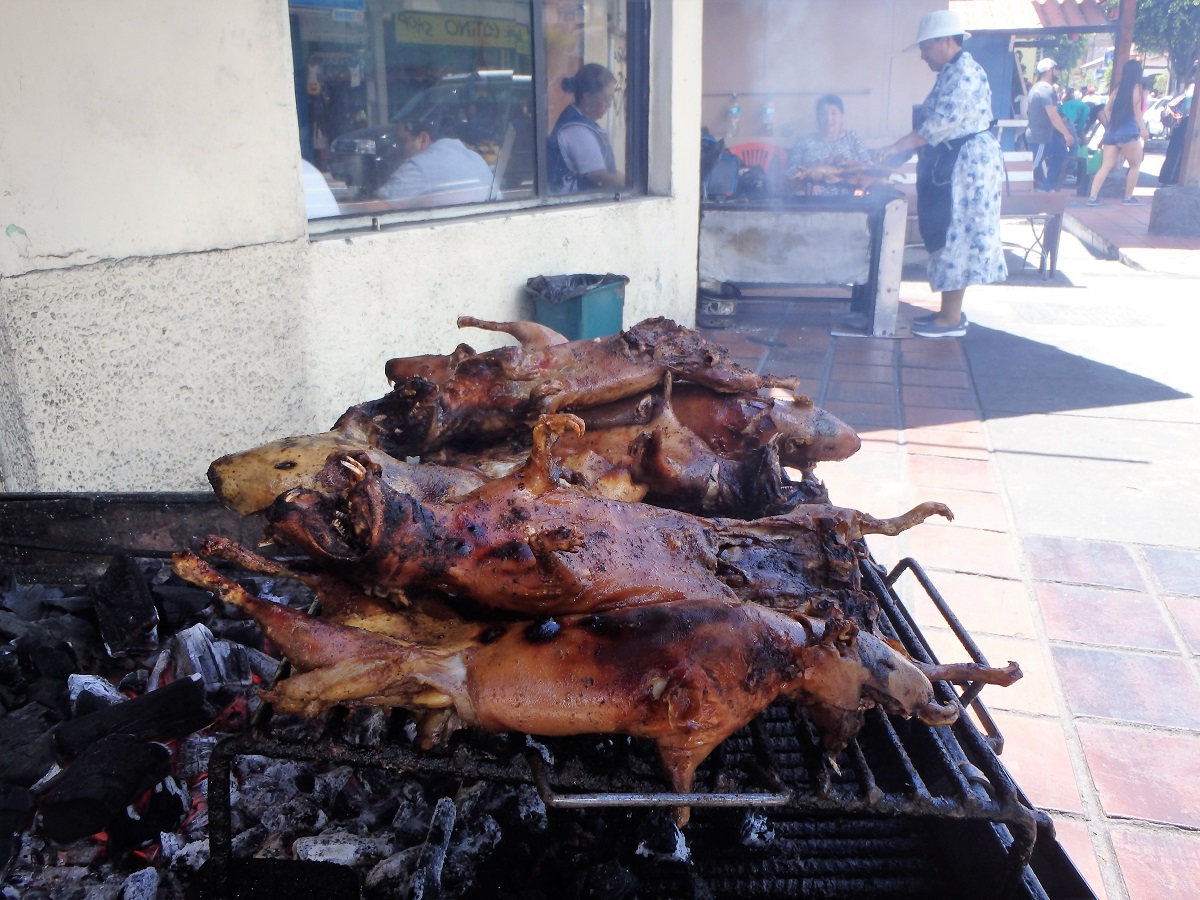
The ‘out there’ option
Last on the list is definitely the most adventurous. A favourite among locals is the (slightly squeamish) delicacy: bull’s penis soup.
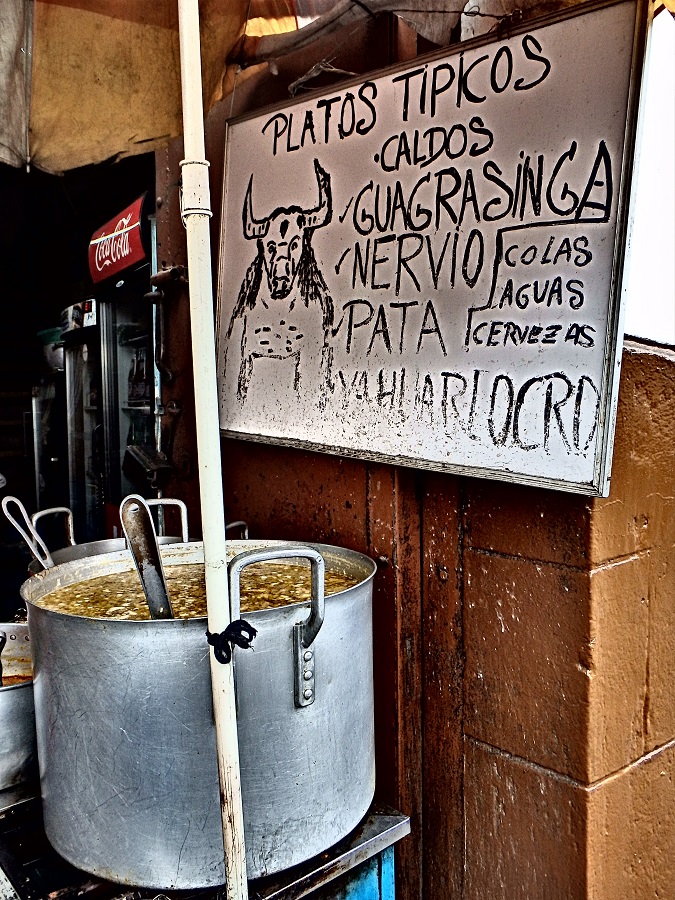
I think it goes without saying that since we didn’t even try the cuy, then this soup was definitely off the menu for us. We just didn’t have the balls for it! Sorry… ha!
Where to stay in Quito
The most popular districts for backpackers to stay is the historic Old Town or the more vibrant La Mariscal. As we visited Quito three times, we decided to try out three different hostels staying in different areas of the city.
We first stayed at Colonial House in the city’s Centro Historico. The location was great and we loved the chilled vibe. The garden is a perfect spot to share a few beers with other travellers. They even had pet rabbits!
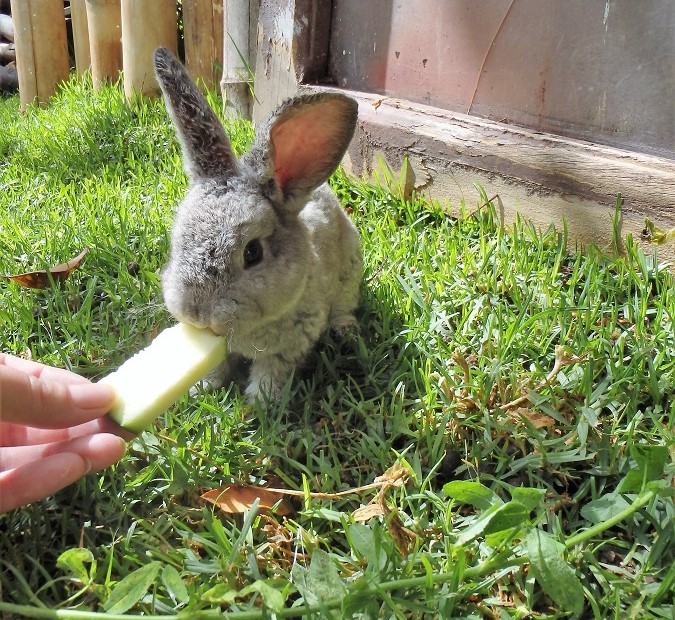
On our second round through Quito we checked out the city’s party district. After quite a bit of research we decided to stay Vibes Hostel. Our dorm was decent, the kitchen was ok, there was a pool table, a small bar with daily drink specials and (most importantly) a gorgeous puppy, Loki.
For our third and final stint in Quito we had wanted somewhere close (and cheap) to the airport, but that didn’t seem to be an option. Instead we sucked it up and paid the $20 USD taxi ride again back towards the city’s centre.
We ended up a 10-15 minute walk north of La Mariscal in El Hosteito. Looking for something again with a chilled vibe, this certainly fit the bill for a couple days of relaxing.
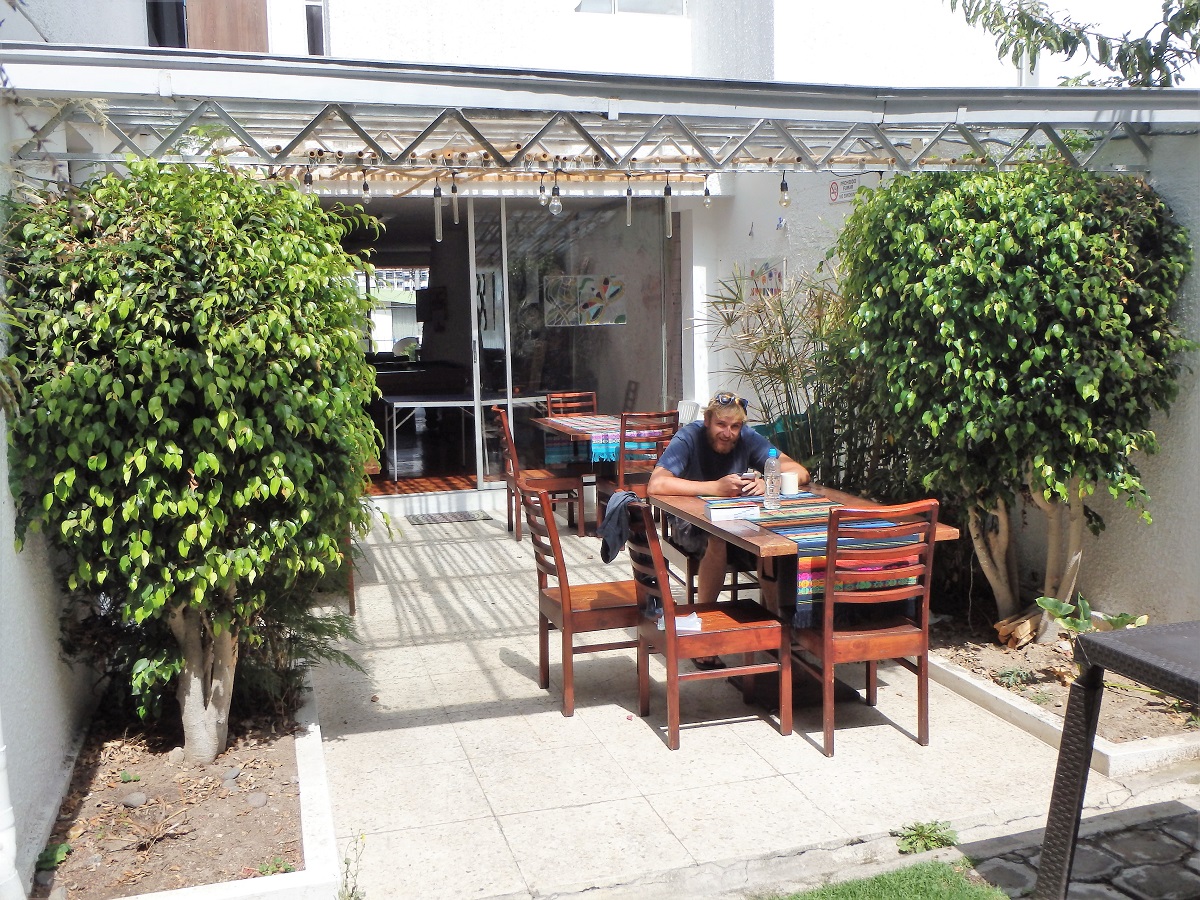
The location wasn’t as good as the others but it was clean, had funky pod-style beds, a decent outdoor patio and they served an awesome breakfast.
Tip: Buy your own mango from the market to have with their pancakes in the morning. Heaven!!
How to get to Quito
We first arrived in Quito after crossing the border from Colombia. For travel tips on this route we recommend checking out our blog From Cali to Quito.
If travelling from another city within Ecuador then you should not be too hard pushed to find a direct bus to the capital. Just note that Quito has two bus terminals, one in the north and the south. Make sure to disembark at the correct station!
If you are travelling from Peru then the most popular border crossing is through Aguas Verdes. Many backpackers find themselves in Peru’s northern beach town of Mancora before making their way across to Cuenca.
Another option is flying into Quito, but this is usually the least budget-friendly option.
We actually flew out of Quito to Peru’s capital, Lima. In our excitement planning our South America trip we booked these flights waaaay ahead of time (along with our Galapagos ones).
We are not sure why we did this and slightly regretted the decision. If we hadn’t have been too organised, we totally would have got the bus which would have cost just $50 USD, versus $250 USD.
We think Quito is a great introduction to Ecuador’s history and culture. Our backpackers guide to Quito should hopefully give you the buiding blocks you need for a memorable experience in the capital. Happy travels!

